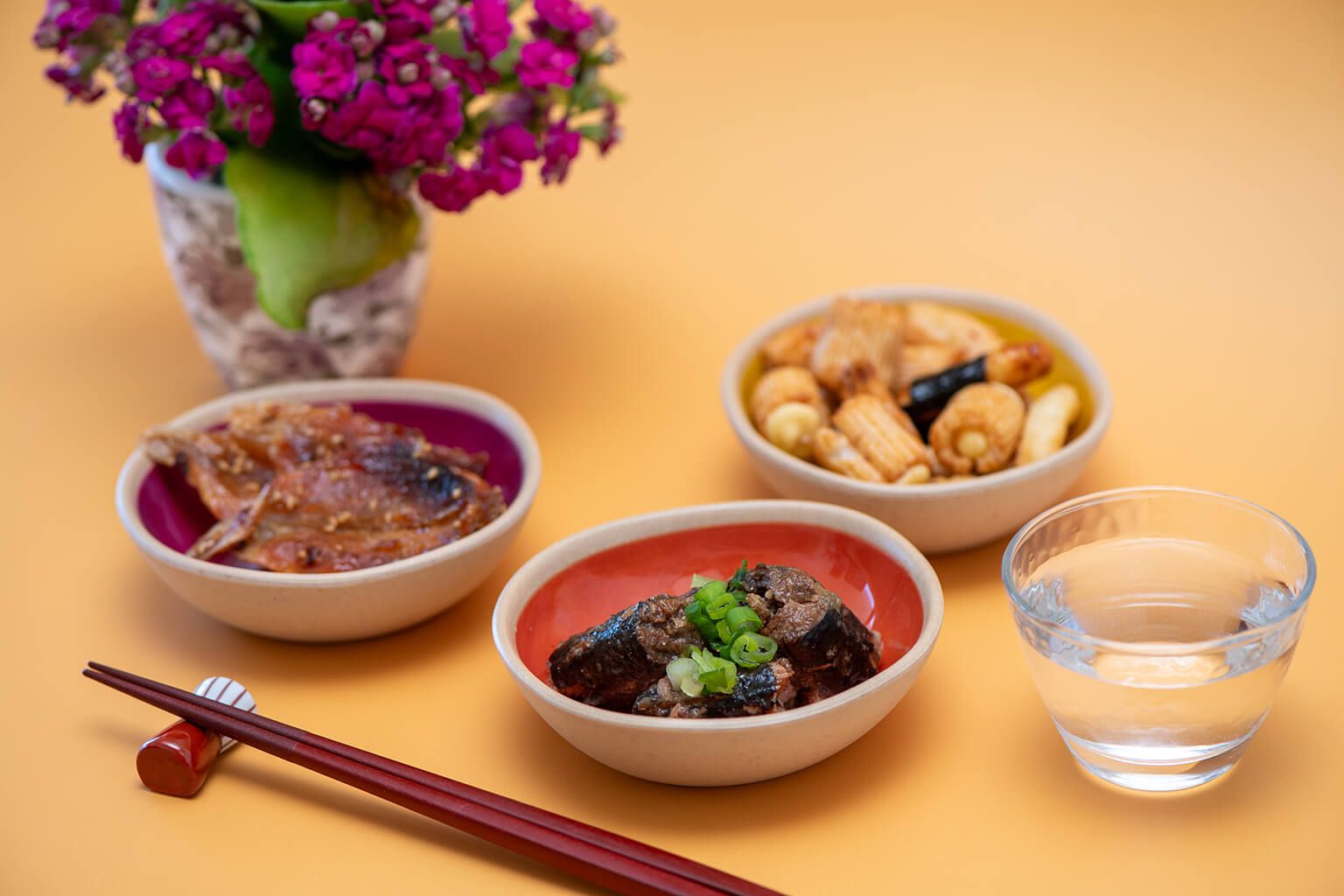Where: Second floor, 4 Chome−11−28, Nishiazabu, Minato, Tokyo, Japan
Hours: 6 p.m. to 11:30 p.m. (Tues-Fri); 3 p.m. to 11 p.m. (Sat, Sun, holidays)
“Invisible Pink Unicorn” may sound like a drink that belongs in a hazy pub in Amsterdam, but it’s one of the extremely rare bottles of sake that patrons have access to at EUREKA! bar in Tokyo. Friendly with a somewhat industrial vibe, EUREKA! is among the most acclaimed sake bars in the upscale Nishiazabu district, and special releases and collaboration sake are just one of its many draws.
Delightfully light and sweet with a fruity taste that prances on the tongue, this mystical sake is the perfect cap to my evening of fine “omakase” (chef’s choice) dining and drinking at the hands of Sake Samurai Marie Chiba. This aged “kijoshu” (sake brewed with sake instead of water) was brewed using another aged kijoshu, meaning that the maker employed this unique, yearslong process twice. The result is a fantastical tasting sensation I’ve never experienced before.
Chiba’s strong connections with breweries like Aramasa Shuzo, maker of “Invisible Pink Unicorn,” allow the bar owner to offer sake that the average izakaya can’t.
“It is possible because of the deep bond I have had with various breweries for over 10 years,” Chiba shares. “The truth is that it is not easy for a single restaurant to get this kind of limited-edition sake. … Also, for people who have never had sake before, don’t you think they will be more likely to try it if they hear that it is original or limited-edition sake?”
Chiba, a sommelier and the author of the book “Sake Pairing,” established these privileged relationships simply by following her passion and curiosity for “nihonshu,” Japan’s national beverage.
“I go to the breweries in various parts of Japan every winter to help with the work and exchange ideas,” she says. “Even after studying and facing sake so much, there are still so many things I don’t understand! That’s why it’s fun. I want to understand why it can make people so happy, but I can’t, so I want to study it even more.”
Like others before her, Chiba discovered that once you start learning about sake, it’s difficult to stop. Sake spurs the thirst for knowledge for several reasons, not least of which is that it’s deeply embedded in Japanese history and culture. Equally interesting is the sheer number of possibilities in sake; it’s a game of choices, from the water used in brewing to the drink ware used in serving, and each one can affect taste, aroma and overall impression. Chiba navigates all of them when creating her sake and food pairing menu, which changes with every customer.
“Although we have a basic pairing manual, I actually tailor my service to the preferences of each and every customer in front of me, so I change the pairing to suit a variety of situations. It’s a lot of work for the staff! … This is also why EUREKA! doesn’t have a course menu.”
Luckily for me, Chiba and her staff are able to craft a vegetarian menu I doubt I’ll ever forget — though I must admit, their famous cheese and ham katsu (fried cutlet) is difficult to resist.
No matter. I thoroughly enjoy my personalized courses, from the fermented butter and dried persimmon bites coated in rock salt, to the creamiest mushroom risotto I’ve ever eaten. The type, taste and sake ware for each drink pairing is different, ranging from the dessert-like Raifuku “Chocola-kun” to a side-by-side comparison of two sake by Miyoshino Jozo, produced on the same day but in two different batches.
Clearly, Chiba and her well-trained crew like to geek out on sake, but they also keep it fun and approachable. They’re happy to have conversations with their guests, some of whom are regulars who keep coming back for Chiba’s latest surprises.
“My approach to personally selecting sake for each customer may be what leads to repeat visits. The type of sake and its temperature may be different even if you order the same dish for the second time or later, so you can enjoy it many times over. This is also a one-time encounter.”
Here, she refers to a Japanese proverb and the calling card of her upscale sake bar: “Ichi-go, ichi-e” (“いちごいちえ”), meaning “One time, one meeting.” The effect of this phrase is that every moment is a once-in-a-lifetime encounter. Even if it’s with the same person — or the same sake — you’ll never have the same exact experience twice. “Ichigo” also means “strawberry,” hence the mismatched, neon letters spelling out “strawberry meeting” in an otherwise dark corner of the bar.
EUREKA! may be small, but the 13-seat, J-shaped countertop hosts drinkers from all over the world. When I visited, I found it inspiring to share the space with people from Italy, Israel, Japan and the U.S., and curious how their vastly different paths through life had led them to this sake moment.
“I have seen that there are no borders when it comes to sake,” Chiba remarks. “I believe that it is because I continue to [show] the diverse possibilities of sake to the world, not just in Japan. … [Sake is] a language tool. To be honest, I’m not very good at talking to people. But somehow I can talk better when I have sake. And sake is never boring.”
Like other great beverages, sake is as particular as it is universal. Nihonshu is uniquely Japanese, and each bottle boasts the natural wonders of its specific prefecture, yet it speaks a language that can be heard and felt by all. The communal act of enjoying delicious sake with a meal, learning, and sharing a once-in-a-lifetime moment — that’s the grand revelation at the center of EUREKA!
As I’m walked out the door and hugged several times by Asami-san, my server for the evening, I feel as though I’m leaving the home of a friend I’ve known for years. Descending the stairs from the second-floor bar, I hear her continuous refrains of “kiwotsukete” (“気をつけて,” “take care”), and look up to see her rosy face smiling, her experienced hands waving us off. I already can’t wait to come back to Japan and see my friend again.















